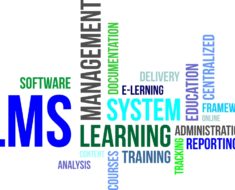
NearSay
We live in a digital world where nearly every business needs one software or another for performing its crucial functions.
There are eLearning tools for successfully launching and handling an employee training program. There are CRMs for managing relationships with customers. Then there are software suits that enable companies to develop digital products ranging from graphics to websites.
However, a mistake made while purchasing these tools can upset their experience and effectiveness.
Making yourself aware of the following software purchase mistakes will keep you from falling for them. So, let’s read on.
1. Investing When It’s Not Really Needed
Indeed, you or your company may require a bunch of tools to perform different functions. But are you sure that you are not planning an unnecessary purchase?
Even if a particular tool is needed two months down the line, is it worth buying it right now?
This will add to your current expenses. And the worst part is that the tool’s subscription will start on the day of your purchase.
So, if the subscription is valid for a year and you don’t need the tool for another two months, your money for these two months will be wasted.
It’s best to buy tools only when they are a priority.
2. Paying for Features That Your Business Doesn’t Need
A large number of tools are sold in the form of packages.
Based on your requirements, you can choose the package that is offering features relevant to your needs.
And that is the ideal condition.
Some buyers may get attracted to the top latest features and end up paying for them, even when their company doesn’t need them.
For example, if your company is planning to buy a web conferencing software, it would be best to weed out tools with features that don’t match your needs. Plus, to choose the best web conference software, you will also have to consider your requirements.
3. Not Consulting Your Team
Many times the plan that you have for your team may not seem feasible or comfortable to them.
This holds true for software as well.
While you might have made a purchase decision about buying a tool, if it comes off as too tricky to use, your team members may have to spend more time struggling and learning about it.
This can kindle conflicts and discomfort across the team. It’s best to avoid such fiascos by consulting your team members or their managers.
4. Not Planning For Your Future Needs
Whenever you buy software for an important business function, it’s best to plan your purchase for the long haul.
First of all, if you buy a software subscription for an extended period of time, you may as well get a good discount.
Secondly, this will ensure that your team doesn’t have to keep moving from one software to another.
Such movements can disturb the optimal flow of any process.
Also, it’ll save you from the hassle of researching for a new software every once in a while.
5. Not Checking Software Vendor’s Reputation
The reputation of a software vendor speaks a lot about the tool’s usability and the vendor’s customer service.
If we fail to check the vendor’s reputation before buying a tool, we may have to face ill-consequences when we need customer support. Plus, if the tool’s reviews aren’t positive, you must think twice before finalizing your purchase.
So, make it a thing to check the tool vendor’s reputation. It’s best to look out for reviews and testimonials.
You can also consider the overall experience that the software vendor has in the same industry.
6. Cutting Corners
Cutting corners while buying software is another recipe for failure.
While overspending on unnecessary features should be avoided, excluding important features to save a few more dollars is also not good.
Try to steer clear from tools or subscriptions that you may have to upgrade within a month.
Wrapping Up
Making mistakes while buying a software can lead a company to severe consequences. To avoid such failures, it’s best to avoid making selection mistakes.
In this post, we mentioned a few common mistakes that companies must avoid while buying a software suit.
Hopefully, this was helpful to you.









































